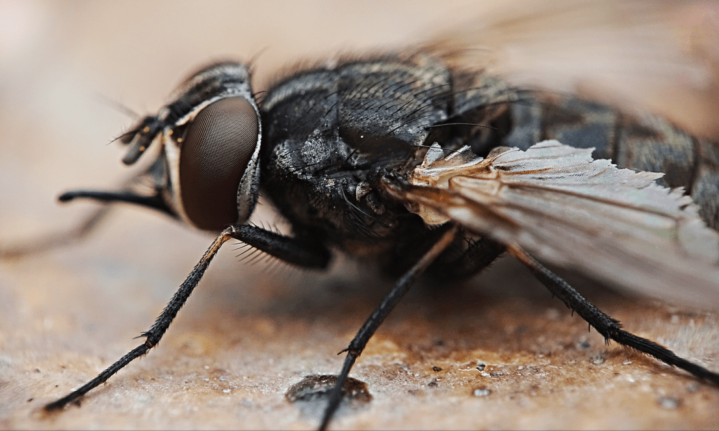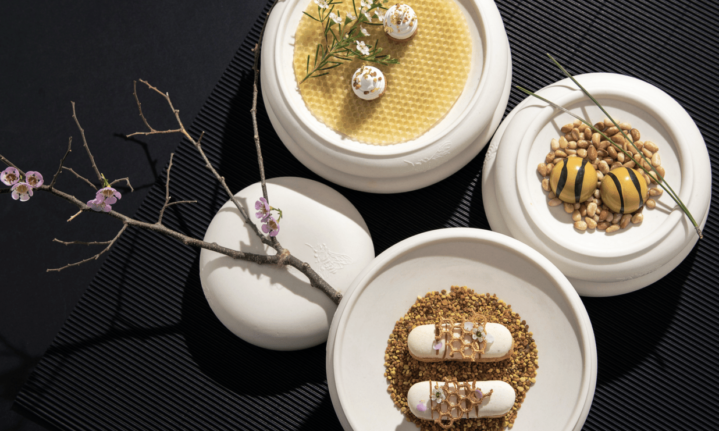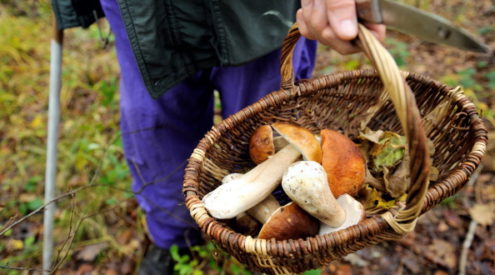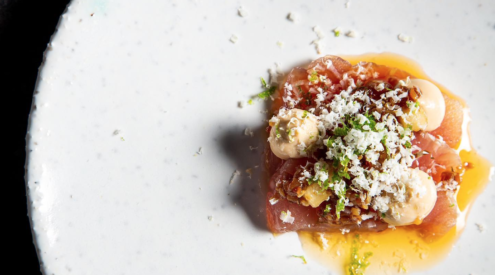Twenty years ago, as a dumb so-and-so living in Taiwan, my favourite bar snack was deep-fried bumble bees. They appeared on tables the way peanuts do on any pub counter and I regularly consumed them by the fistful. Crisp and delicious, I munched them down without a care for the reality of where they might have come from, nor the circumstances of their transition into tasty morsel.
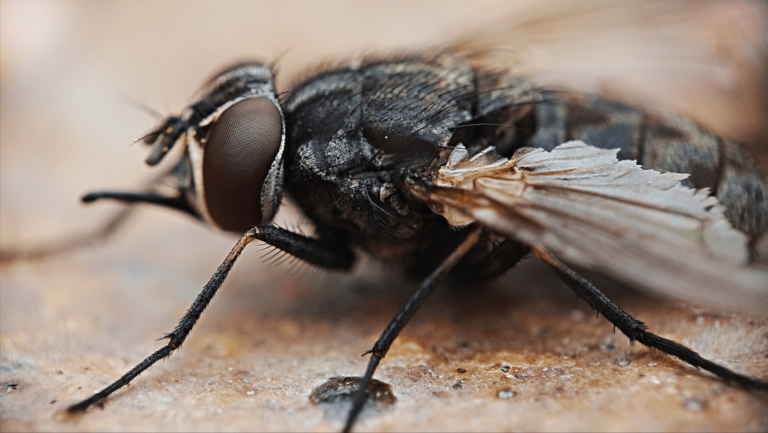
Who’d have imagined that, two decades on, bumblebees are among millions of insect species whose survival hangs in the balance? Insects everywhere are disappearing at an alarming rate.
To many this might sound like cause for celebration. Down with mosquitoes! Death to cockroaches! But when last did you see a ladybird? Do your children even know what a praying mantis looks like?
The buzz, everywhere, is being silenced. Bees are dying out, beetles going extinct, and even creatures we will never know once existed are fizzling out before we have a chance to “discover” them. The rate of species collapse is flabbergasting – you can measure it by the number of tiny corpses on your car windscreen: notice how few insect cadavers there are compared with just a decade ago?
Even if you come at it from a purely selfish, self-preservation perspective, pretty alarming is the fact that many of these disappearing critters perform services that are essential – to us. From pollinating the plants that we consume to keeping the planet free of faeces and dead bodies, we unwittingly rely on all sorts of insects we commonly think of as pests. They keep life ticking over.
Did you know, for example, that there’s a specific type of wasp that has evolved to pollinate each and every kind of fig tree? They’re designed – the way a key is formatted to fit a lock – so that only that one variety of wasp is able to penetrate its partner fig, Nature made it so to prevent cross-pollination.
In Australia, some mango-growers use a smelly mix of fish and chicken to lure blowflies, which are known to improve their fruit harvests – the flies come to lay their eggs in the rotting meat, but they seek sustenance in the mango flowers, thereby performing a vital pollination service in the orchards.
Around half of the 150 families of fly, in fact, visit flowers – they are highly efficient pollinators in places where bees tend not to be so active.
While it’s estimated that animals of all varieties are responsible for around 76% of crop plant pollination, the vast majority of this work is up to insects – without them, we face a dystopian future. Some crops will disappear entirely, and the diversity of what’s available for our consumption will shrink as many vegetables and fruits that rely on insects no longer get pollinated.
Without these misunderstood creatures, we face catastrophe. Prepare not just for fewer options in the fresh produce aisle as a result of lower yields, barren fields and empty orchards, but completely collapsed food systems and the return to mainstream of diseases like scurvy. It’s going to get ugly.
And let us not forget that insects are a major food source for other creatures – if we see insects decline, birds will follow, along with bats and other insectivorous mammals.
Admittedly, in my bee-eating days, sustainability was barely a buzzword and my main fascination was around how such tiny creatures packed in so much flavour. Those who have long eaten insects, know how tasty and nutritious they are.
‘A sort of very natural taste,’ says food scientist Leah Bessa, describing an insect-derived milk-like product she developed a few years ago. ‘More of an earthy undertone than dairy milk, which is quite sweet.’

The product was Entomilk, a world first in that Bessa’s South African team pioneered the creation of a dairy replacement using the larvae of black soldier flies, creatures that are farmed worldwide, mostly for use in livestock feed.
Entomilk was never sold in its liquid form. Instead, Bessa used it to make Gourmet Grubb, a nutritious ice cream that did well at markets and pop-up events.
Entomilk’s purpose was to demonstrate that an ethical, nutritionally superior and economically viable dairy substitute was possible. It was envisioned not only as a solution to the dairy industry’s dodgy ethics, but as something also more sustainable than plant-based milk options since those are terribly resource intensive.
Black soldier flies make sense in the industrial-scale farming context because, like many insects, they thrive in environments where they grow on top of each other. ‘You can keep a lot of them in a small space so you don’t need the masses of land mass required for livestock farming,’ Bessa says. ‘You also don’t need as much water. Resource usage is minimal because insects don’t regulate their body temperature and they don’t have all these organs to run.’
Another advantage is that insects eat differently. While cattle require 12 kilograms of feed to produce one kilogram of edible meat, the same edible body mass can be achieved by feeding insects just two kilograms of feed. They also grow incredibly quickly – the larva Bessa worked with could be harvested in less than 15 days – that’s 15 days of growth from egg to harvesting.
Insects can be grown on agricultural waste such as inedible plant matter and grain by-products; you’re effectively creating a closed loop cycle, eliminating the need to throw food away or send it to landfills.

Crops and livestock are far more susceptible to diseases and other environmental risks. Plus, insects don’t contain the antibiotics and other nasty things regularly pumped into dairy cows. Never mind the ethical questions around how dairy industry cows are routinely treated. ‘Insects aren’t domesticable, so if they don’t like the environment they’re in, they won’t grow.’
Black soldier flies are high in fat and four times higher in protein than regular dairy products; and they contain higher quantities of minerals such as zinc, iron and calcium. Like most insects, they’re nutritionally dense.
While Bessa’s company has paused work on Entomilk, overseas the insect food market is preparing for a boom. In Europe and the US, a variety of insects are farmed, many ground into nutrient-dense powders that can be added to foods such as breads and waffles (they’re doing it in Belgium, so why not everywhere?), and for the fitness industry’s protein smoothies and shakes. Insects are used to bulk up the protein content of some foods, and are a source of protein for meat alternatives. Even high-end restaurants have been experimenting with dishes that incorporate insects.
Which is all very well for hungry humans, but what about the plight of insects?
Counterintuitively, consuming insects might be one way of saving them. Agriculture in its present form is responsible for land degradation, climate change and is a major source of toxic chemicals that are harmful to insects. We’re effectively farming insects out of existence.
Those campaigning for insects suggest a radical switch to “nature-based farm management” which would see a return to healthy soils and establishment of environments in which insects might thrive and survive. The payoffs would include, they say, helping to solve the climate crisis.
The idea is to let nature do its thing, for humans to dramatically reduce their interference. We need havens across the world where insects can do what they were designed to do. Introducing a degree of wildness to cultivated lands, monoculture food gardens and single-variety orchards is a start.
And, yes, even pesky critters like flies deserve to exist. It may be a shock to admit, but remember that some fly species pollinate crops (like cacao and bell peppers) we would seriously miss.
They may irritate the hell out of us, but if you don’t exactly love them you can always enjoy them in your smoothie.
Our Ento-future
Eating insects isn’t going to remain a novelty forever. According to a market research report released earlier this year, the edible insects market is expected to reach $9.60 billion by 2030, which amounts to a projected annual growth rate of 28.3% over the next eight years – that’s over 3 million tons of insects being consumed in 2030. Researchers believe that current food production needs to be doubled to fulfil the requirements of a growing human population. Edible insects are a viable solution.
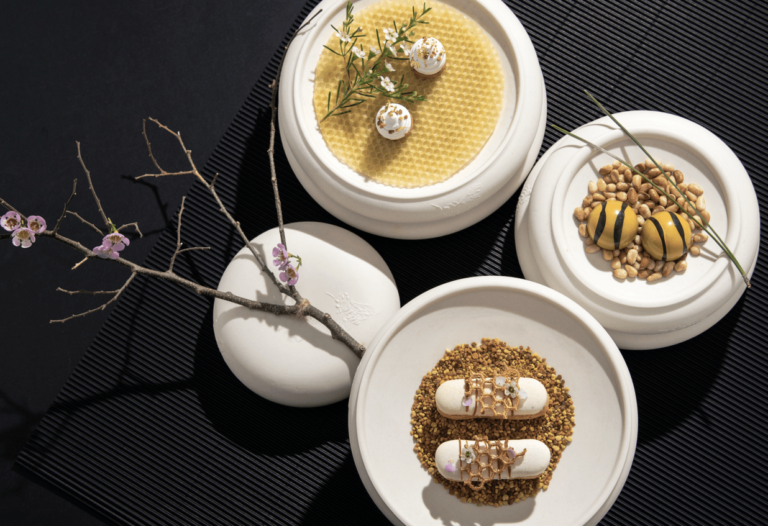
Show Me the Honey
Four siblings from Athlone, Cape Town entered their fynbos honey into the 2021 London International Honey Awards and scored platinum, the first such recognition for a South African honey at this competition
The sisters, who range in age from 11 to 20, launched their Beelal Honey business during Lockdown; their 150-odd hives are on the West Coast where a number of farmers allow them to keep their bees. The bees have wide access to the region’s flowers. beelalhoney.com
In Cape Town, honey from Silvermist Organic Estate on the border of Hout Bay and Constantia is used to create an astonishing petit-four course at La Colombe, widely considered the country’s top restaurant, where chef James Gaag takes great inspiration from nature. Called “Silvermist honey”, the sweets are served in a tiered ceramic “beehive”. lacolombe.restaurant/food
At Starry Starry Night, a private patch of paradise abutting Marloth Nature Reserve near Montagu in the Klein Karoo, the days hum with the high-intensity buzz of bees. Their work is evident in the abundance of plants that blanket the mountains. Owners JD and François Van Zyl Lebrun have hives for their wild-at-heart bees. ‘We just leave them to get on with it,’ says JD. ‘The beauty is that we have a lot of fynbos so there’s always a decent food supply for the bees.’
The bees produce a little honey for their home and for their three guest cottages (where guests have access to hiking trails, rock pools with miniature waterfalls, and a wood-fired hot tub).
‘We have our own hives on the property … it’s completely organic, and doesn’t get treated or diluted in any way; it’s just good old honey, the way the bees made it.
‘One reason I think the bees are very happy is that we don’t use any insecticide, pesticides or chemical fertilisers anywhere on the farm.’
You can taste it – raw and unpasteurised – while staying in one of their self-catering cottages, where jars of the precious nectar are also available to buy. starrystarrynight.co.za

Termites on Toast
A traditional, if now virtually forgotten, Namaqualand delicacy are the white nymphs of termites. Popularly known as rysmiere or rice-ants, the nutty-flavoured insects were collected, scalded in boiling water and cleaned of any brown soldier ants before being slow-roasted over the fire with a nub of fat. Once done, they could be eaten as is or spread on buttered ash bread.
In Mexico, the pupae and larvae of the velvety tree ant (Liometopum apiculatum) are called escamol and are a decadent treat, thought of as “caviar of the desert”, similar to pine nuts or corn kernals, nutty and buttery in flavour and similar to cottage cheese in terms of mouthfeel. They’re typically fried in butter with chillis and onions, wrapped in a tortilla and served in tacos. They even feature on menus in high-end restaurants in Mexico City. Hilariously, the velvety tree ants are popularly known as la hormiga pedorra, “the farty ant”, because of the odour of their nests.
Zimbabwe’s favourite snack and popular in Limpopo, mopane worms are actually caterpillars that form part of the life cycle of a species of emperor moth (Gonimbrasia belina). Nutritious and protein-packed, they’re typically hand-harvested from mopane trees. Their guts are squeezed out before they’re sundried. If smoked and fried, they can taste like steak or even biltong.
Another familiar caterpillar is the maguey worm, which makes its home on the agave plant from which tequila is produced. Aside from finding them in a bottle of liquor, in Mexico they’re eaten as crispy fried snacks with a nutty flavour and are used in tacos; it’s a foodstuff that has come a long way – the Aztecs used them as a source of protein.
Other bugs eaten in Mexico are chapulines, deep-fried grasshoppers that are a popular tortilla filling in Oaxaca. Crunchy, yeasty and salty, they’re seasoned with lime and chilli, or with salsa and guacamole, and are also a great topping for flatbread-like tlayuda, or simply as a plain snack, eaten by the handful – and not bad if you don’t mind the wings, antennae and legs tickling your throat as they go down.
A version of this article originally appeared in the August 2022 print issue of Getaway.
Words by Keith Bain
TikTok | Instagram | Facebook | Twitter
Also Read: SA named best country in the world to visit and Cape Town best city









